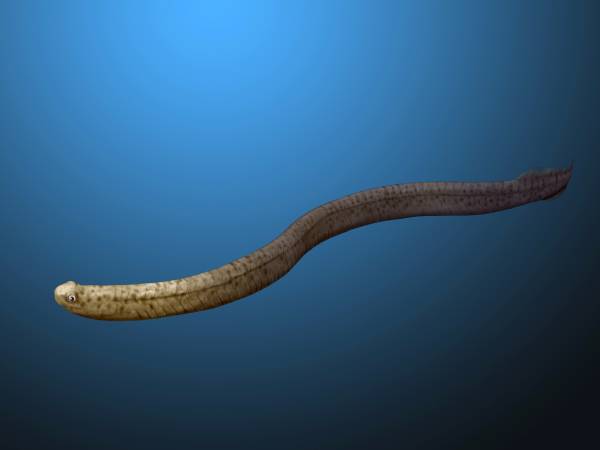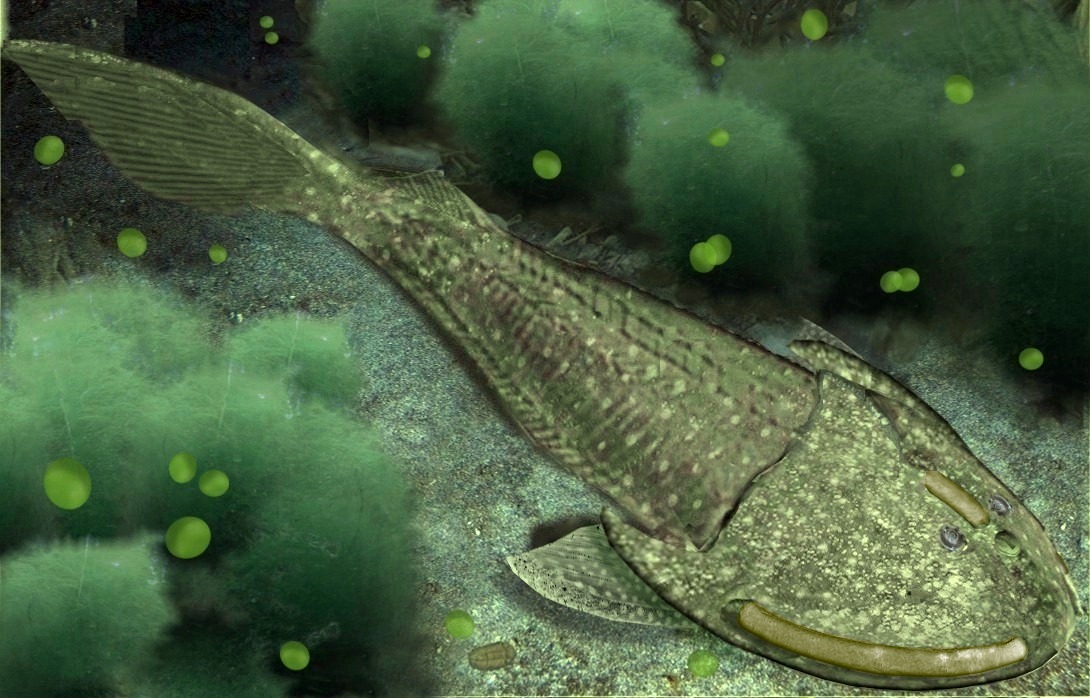|
Oulodus
''Oulodus'' is a genus of conodonts in the family Prioniodinidae. ''O. elegans'' is found in the Late Silurian to Early Devonian Keyser Formation, a mapped limestone bedrock unit in Pennsylvania, Maryland, Virginia, and West Virginia. References External links * Prioniodinida genera Paleozoic life of Ontario Paleozoic life of British Columbia Paleozoic life of the Northwest Territories Paleozoic life of Quebec Paleozoic life of Yukon {{Conodont-stub ... [...More Info...] [...Related Items...] OR: [Wikipedia] [Google] [Baidu] |
Prioniodinidae
Prioniodinidae is an extinct family of conodonts in the order Prioniodinida. Genera Genera are: * †'' Bryantodus'' * †'' Camptognathus'' * †''Chirodella ''Chirodella'' is an extinct genus of conodont Conodonts (Greek ''kōnos'', "cone", + ''odont'', "tooth") are an extinct group of agnathan (jawless) vertebrates resembling eels, classified in the class Conodonta. For many years, they were kno ...'' * †'' Cornuramia'' * †'' Dyminodina'' * †'' Falodus'' * †'' Guizhoudella'' * †'' Gyrognathus'' * †'' Idioprionodus'' * †'' Kamuellerella'' * †'' Lagovidina'' * †'' Ligonodina'' * †'' Metalonchodina'' * †'' Multidentodus'' * †'' Neoplectospathodus'' * †'' Oulodus'' * †'' Palmatodella'' * †'' Pluckidina'' * †'' Polygnathellus'' * †'' Prioniodella'' * †'' Prioniodina'' * †'' Prionognathodus'' * †'' Pristognathus'' * †'' Scotlandia'' * †'' Subbryantodus'' * †'' Uncadina'' * †'' Veghella'' References * Novyy ranneordovikskiy ro ... [...More Info...] [...Related Items...] OR: [Wikipedia] [Google] [Baidu] |
Keyser Formation
The Late Silurian to Early Devonian Keyser Formation is a mapped limestone bedrock unit in Pennsylvania, Maryland, Virginia, and West Virginia. Description The Keyser is a nodular limestone overlain by thick- and thin-bedded limestone and laminated limestone at its type locality in Keyser, West Virginia. In central Pennsylvania, the basal "calico" limestone is a fossiliferous, medium-light- to medium-gray very thick bedded calcilutite containing numerous small irregular patches of clear calcite. The abundantly fossiliferous, nodular limestone at the base overlies the "calico". Overlying this is 5 to 6 m of fragmental calcarenite containing abundant crinoid columnals. Above the calcarenite is 6 m of fossiliferous, banded calcisiltite. The uppermost 15 m is a sequence alternating between laminated, stromatolitic calcisiltite, and calcilutite and calcisiltite that are argillaceous and fossiliferous. Depositional environment The depositional environment of the Keyser is interpret ... [...More Info...] [...Related Items...] OR: [Wikipedia] [Google] [Baidu] |
Animal
Animals are multicellular, eukaryotic organisms in the Kingdom (biology), biological kingdom Animalia. With few exceptions, animals Heterotroph, consume organic material, Cellular respiration#Aerobic respiration, breathe oxygen, are Motility, able to move, can Sexual reproduction, reproduce sexually, and go through an ontogenetic stage in which their body consists of a hollow sphere of Cell (biology), cells, the blastula, during Embryogenesis, embryonic development. Over 1.5 million Extant taxon, living animal species have been Species description, described—of which around 1 million are Insecta, insects—but it has been estimated there are over 7 million animal species in total. Animals range in length from to . They have Ecology, complex interactions with each other and their environments, forming intricate food webs. The scientific study of animals is known as zoology. Most living animal species are in Bilateria, a clade whose members have a Symmetry in biology#Bilate ... [...More Info...] [...Related Items...] OR: [Wikipedia] [Google] [Baidu] |
Chordata
A chordate () is an animal of the phylum Chordata (). All chordates possess, at some point during their larval or adult stages, five synapomorphies, or primary physical characteristics, that distinguish them from all the other taxa. These five synapomorphies include a notochord, dorsal hollow nerve cord, endostyle or thyroid, pharyngeal slits, and a post-anal tail. The name “chordate” comes from the first of these synapomorphies, the notochord, which plays a significant role in chordate structure and movement. Chordates are also Bilateral symmetry, bilaterally symmetric, have a coelom, possess a circulatory system, and exhibit Metameric, metameric segmentation. In addition to the morphological characteristics used to define chordates, analysis of genome sequences has identified two conserved signature indels (CSIs) in their proteins: cyclophilin-like protein and mitochondrial inner membrane protease ATP23, which are exclusively shared by all vertebrates, tunicates and cep ... [...More Info...] [...Related Items...] OR: [Wikipedia] [Google] [Baidu] |
Conodont
Conodonts (Greek ''kōnos'', "cone", + ''odont'', "tooth") are an extinct group of agnathan (jawless) vertebrates resembling eels, classified in the class Conodonta. For many years, they were known only from their tooth-like oral elements, which are usually found in isolation and are now called conodont elements. Knowledge about soft tissues remains limited. They existed in the world's oceans for over 300 million years, from the Cambrian to the beginning of the Jurassic. Conodont elements are widely used as index fossils, fossils used to define and identify geological periods. The animals are also called Conodontophora (conodont bearers) to avoid ambiguity. Discovery and understanding of conodonts The teeth-like fossils of the conodont were first discovered by Heinz Christian Pander and the results published in Saint Petersburg, Russia, in 1856. The name ''pander'' is commonly used in scientific names of conodonts. It was only in the early 1980s that the first fossil evidence of ... [...More Info...] [...Related Items...] OR: [Wikipedia] [Google] [Baidu] |
Prioniodinida
Prioniodinida is an extinct order of conodonts, a jawless vertebrate. Families Families are: * †Bactrognathidae * †Chirognathidae * † Ellisoniidae * †Gondolellidae * † Prioniodinidae References * Sweet, W. C; P. C.J Donoghue (2001). "Conodonts: past, present, future". Journal of Paleontology 75 (6): 1174. External links * Prioniodinida at biolib.cz(retrieved 22 April 2016) Prioniodinidaat fossilworks Fossilworks is a portal which provides query, download, and analysis tools to facilitate access to the Paleobiology Database The Paleobiology Database is an online resource for information on the distribution and classification of fossil animals ....org (retrieved 22 April 2016) Prehistoric jawless fish orders {{Conodont-stub ... [...More Info...] [...Related Items...] OR: [Wikipedia] [Google] [Baidu] |
Edward Branson
Edward B. Branson was an American geologist and paleontologist. He was a professor of geology at the University of Missouri. Overview of career Branson earned his doctorate at the University of Chicago and joined the Geology department at the University of Missouri in 1911. During his doctoral studies, he had spent time searching for fossils near Lander, Wyoming and so he determined to set up a camp for the hands-on study of geology and paleontology nearby. Also in 1911, he came to Lander with a group of students and established the Missouri Field Geology Camp, which is now known as the Branson Field Laboratory, near Sinks Canyon State Park. The Branson Field Laboratory appears to be the oldest continually operated field geology camp in the United States. Eventually Branson formed a scientific partnership with Maurice "Doc" Mehl, another Chicago graduate who joined the Missouri faculty in 1919. Branson retired in 1948, which is when the camp was renamed in his honor. Contribu ... [...More Info...] [...Related Items...] OR: [Wikipedia] [Google] [Baidu] |
Maurice Mehl
Maurice Goldsmith Mehl (1887 - 1966) was an American paleontologist and professor in the Department of Geology at the University of Missouri. Life and career Mehl was born on December 25, 1887, to Frank and Rebecca Goldsmith Mehl. After graduation from Burlingame High School, he attended the University of Chicago, where he completed a B.S. in 1911 and a Ph.D. in 1914. While at Chicago, he met Lucy Jane Hull and they were married in 1912. At Chicago, Mehl studied vertebrate paleontology under the instruction of prominent paleontologist Samuel Wendell Williston. He taught at Chicago for awhile as well as at University of Wisconsin, University of Oklahoma, and Denison University before joining the University of Missouri in 1919. In addition to teaching and researching at Missouri until his retirement in 1958, where he became known simply as "Doc" Mehl, he also worked as a consultant to the Missouri Geological Survey and Water Resources. While at Missouri, he had a long and produ ... [...More Info...] [...Related Items...] OR: [Wikipedia] [Google] [Baidu] |
Conodont
Conodonts (Greek ''kōnos'', "cone", + ''odont'', "tooth") are an extinct group of agnathan (jawless) vertebrates resembling eels, classified in the class Conodonta. For many years, they were known only from their tooth-like oral elements, which are usually found in isolation and are now called conodont elements. Knowledge about soft tissues remains limited. They existed in the world's oceans for over 300 million years, from the Cambrian to the beginning of the Jurassic. Conodont elements are widely used as index fossils, fossils used to define and identify geological periods. The animals are also called Conodontophora (conodont bearers) to avoid ambiguity. Discovery and understanding of conodonts The teeth-like fossils of the conodont were first discovered by Heinz Christian Pander and the results published in Saint Petersburg, Russia, in 1856. The name ''pander'' is commonly used in scientific names of conodonts. It was only in the early 1980s that the first fossil evidence of ... [...More Info...] [...Related Items...] OR: [Wikipedia] [Google] [Baidu] |
Prioniodinida Genera
Prioniodinida is an extinct order of conodonts, a jawless vertebrate. Families Families are: * †Bactrognathidae * †Chirognathidae * †Ellisoniidae * †Gondolellidae * †Prioniodinidae References * Sweet, W. C; P. C.J Donoghue (2001). "Conodonts: past, present, future". Journal of Paleontology 75 (6): 1174. External links * Prioniodinida at biolib.cz(retrieved 22 April 2016) Prioniodinidaat fossilworks Fossilworks is a portal which provides query, download, and analysis tools to facilitate access to the Paleobiology Database The Paleobiology Database is an online resource for information on the distribution and classification of fossil animals ....org (retrieved 22 April 2016) Prehistoric jawless fish orders {{Conodont-stub ... [...More Info...] [...Related Items...] OR: [Wikipedia] [Google] [Baidu] |
Paleozoic Life Of Ontario
The Paleozoic (or Palaeozoic) Era is the earliest of three geologic eras of the Phanerozoic Eon. The name ''Paleozoic'' ( ;) was coined by the British geologist Adam Sedgwick in 1838 by combining the Greek words ''palaiós'' (, "old") and ''zōḗ'' (), "life", meaning "ancient life" ). It is the longest of the Phanerozoic eras, lasting from , and is subdivided into six geologic periods (from oldest to youngest): # Cambrian # Ordovician # Silurian # Devonian # Carboniferous # Permian The Paleozoic comes after the Neoproterozoic Era of the Proterozoic Eon and is followed by the Mesozoic Era. The Paleozoic was a time of dramatic geological, climatic, and evolutionary change. The Cambrian witnessed the most rapid and widespread diversification of life in Earth's history, known as the Cambrian explosion, in which most modern phyla first appeared. Arthropods, molluscs, fish, amphibians, reptiles, and synapsids all evolved during the Paleozoic. Life began in the ocean but even ... [...More Info...] [...Related Items...] OR: [Wikipedia] [Google] [Baidu] |
Paleozoic Life Of British Columbia
The Paleozoic (or Palaeozoic) Era is the earliest of three geologic eras of the Phanerozoic Eon. The name ''Paleozoic'' ( ;) was coined by the British geologist Adam Sedgwick in 1838 by combining the Greek words ''palaiós'' (, "old") and ''zōḗ'' (), "life", meaning "ancient life" ). It is the longest of the Phanerozoic eras, lasting from , and is subdivided into six geologic periods (from oldest to youngest): # Cambrian # Ordovician # Silurian # Devonian # Carboniferous # Permian The Paleozoic comes after the Neoproterozoic Era of the Proterozoic Eon and is followed by the Mesozoic Era. The Paleozoic was a time of dramatic geological, climatic, and evolutionary change. The Cambrian witnessed the most rapid and widespread diversification of life in Earth's history, known as the Cambrian explosion, in which most modern phyla first appeared. Arthropods, molluscs, fish, amphibians, reptiles, and synapsids all evolved during the Paleozoic. Life began in the ocean but even ... [...More Info...] [...Related Items...] OR: [Wikipedia] [Google] [Baidu] |






